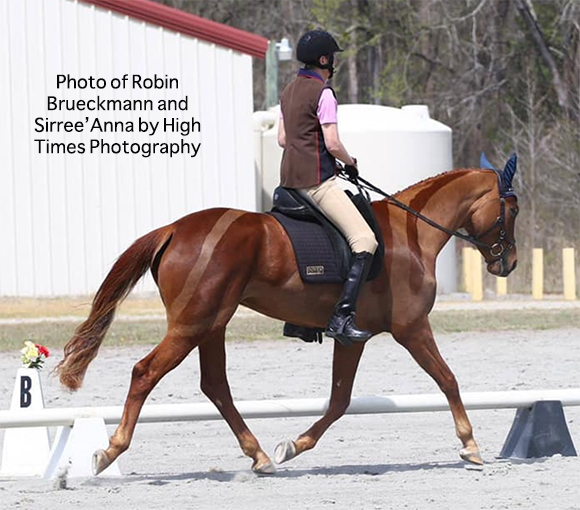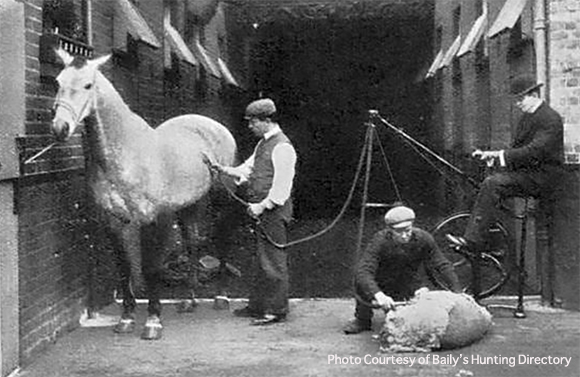Horse Clipping History and Hacks For Success
CH Staff
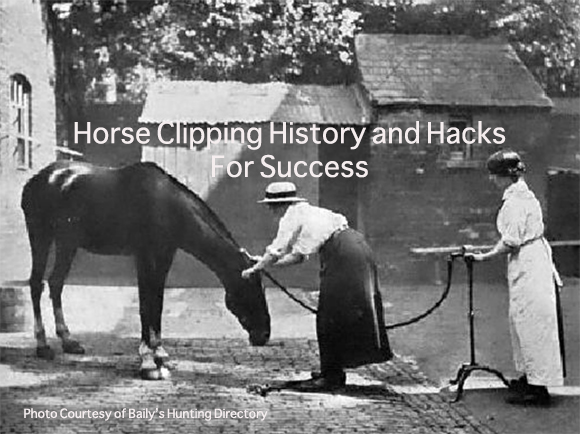
Clipping horses’ winter coats to enable them to cool down and dry off quickly after strenuous exercise has been a part of horse husbandry for eons. The renowned ‘hunter clip’ was accomplished as far back as 1899, utilizing some curious methods of execution.
We spoke with Peter Brook, at Baily’s Hunting Directory, a fabulous resource of all things foxhunting worldwide with many vintage photos and information to share:
“The Gillette company furnished the blades for the devices, and two companies Barton Gillette and Clarke’s, were noted suppliers to the foxhunting clubs of the day that tasked their staff with the mission of clipping the horses.
The advertisements for the Barton Gillette ‘Combination Clipping Machine’ demonstrated in these photos in 1899, promoted it as being able to clip ‘two animals in minutes.’ The amazing obedience of the horses shown in the photos notwithstanding, the cyclist would presumably have worked up quite a sweat to exact that speed of job completion! The ‘top of the range’ deluxe version was available on the day for £12.00 (about £1050 today or $1400). The advertisement also claimed the device could be used 80 times before the Gillette blades required sharpening.”
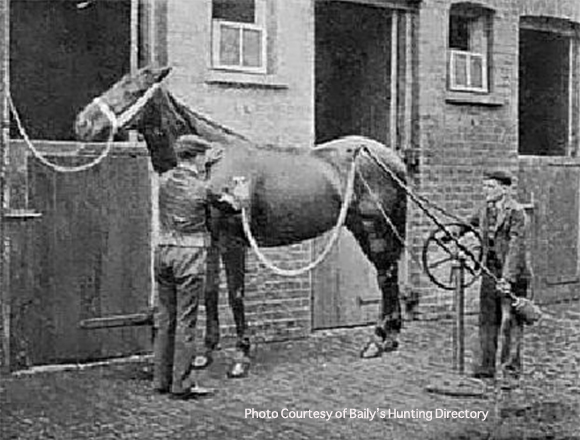
The photo above of a horse tied to a stall door, with a rope halter in a style that I remember using as a child on ponies and donkeys, showcases the use of Clarke’s patent clippers from 1899 at an unnamed kennel, according to Brook at Baily’s Hunting Directory.
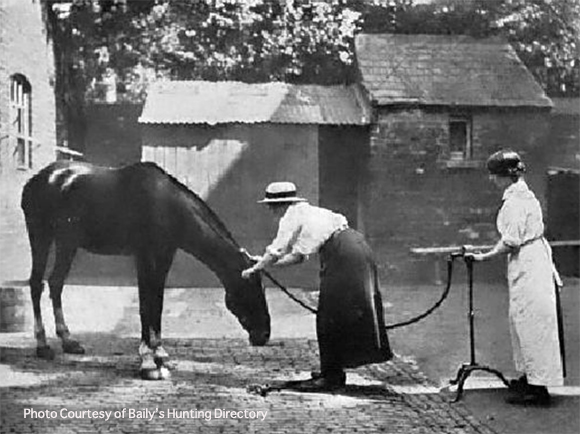
“This photo shows folks clipping a very laid back hunter in 1922. How many of us make sure we have really well polished boots but forget to put a lead rope on the horse we are about to clip?” remarked Brook.
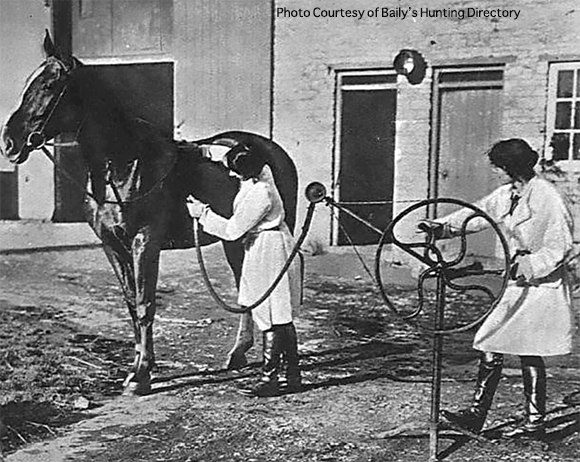
Here is another astonishing photo of two friends preparing a horse for the Opening Meet of a foxhunting club in 1915. Notice the dress code for the task of clipping and the incredible obedience of the horse. However did they keep so clean?
Today many of us clip our performance horses for work, and the variety of clipping designs is limited only by the horse owner’s imagination. From complex artistic designs that serve little purpose other than to highlight the talent and skill of the person wielding the clippers, to traditional trace and hunter clips to high and low chaser/Irish clips.
A horse needs to be in heavy work to require a full clip, and even with this most extensive clip design the saddle region and legs should always be left intact with a full coat for protection from sores caused by tack or injuries to the legs that may be caused by errant hoof contact or debris/obstacles in the field.
Clever use of the clippers can also improve the appearance of the horse’s conformation. The placement of the lines of the clip, either higher or lower on the horse’s sides and the height and angle of the clip line at the top of the legs can all be carefully designed to give the impression that the horse has longer legs, or a thinner or rounder flank. If you start a blanket clip farther back on the wither it will give the illusion of additional neck length and vice versa.
Before you rush out and buy battery or electric clippers to get started on the process of shaving off your horse’s coat, it is a good idea to consider whether the type and amount of work your horse completes during winter months warrants the loss of his winter woolies. You should also contemplate the reality of the additional blanketing that will be necessary to keep the horse warm once those furry pajamas are removed, and the availability of stabling for shelter during adverse weather conditions.
Here are a few pointers that you should utilize to facilitate the easiest and most successful job:
• Start the job with a clean horse. Preferably bathed clean but if the weather is too cold for a proper bath, a thorough grooming beforehand will be needed. The horse must be completely dry.
• Allow plenty of time for the task.
• Ensure blades are sharp, properly tensioned, well lubricated and either fine or medium grade as you prefer for the coat type of your horse.
• Electric clippers only be used with the provision of a circuit breaker or GFCI outlet for safety
• Ensure the environment for the job is free of obstacles, preferably in an area that is easy to sweep up afterward. It should be an area with good lighting with a non-slip surface.
• Train the horse to the noise/feel of the clippers with patience over time without tying the horse to cross-ties or a fixed point. Have the horse held by a confident assistant with a rope and halter or on a bridle for more control.
• Protect your clothes from the horsehair with an overall or coat and don’t wear fleece or other materials that will attract and hold hair. Footwear should be rubber soled and a riding helmet can be helpful to protect the head.
• Use a saddle pad to draw chalk lines for saddle placement, and for the clip lines/design you wish to implement.
• Clip against the direction of growth of the coat and keep the clippers flat against the horse and use long clean strokes to avoid tram lines.
• Clean and oil the blades regularly to avoid them overheating.
• Have a blanket to put over the horse’s back to keep it warm once the coat has been removed on its back, while you work around the head/neck and other areas.
• Don’t clip inside the ears, and use small round-tipped scissors rather than clippers if the horse won’t tolerate the noise and vibration of the clippers in this sensitive area. Close the ear in your hand and trim any hair that sticks out.
• The assistant should stretch each front leg of the horse gently forward and hold it in the air to facilitate safe clipping behind the elbows. Smooth out wrinkles by hand in front of the clipper as you work.
• Place your hand over the horse’s eye when clipping above it.
• Leave the horse’s whiskers if you are competing at FEI! Check rules for your particular country, associations and discipline if competing as removal of whiskers can be against their bylaws and is illegal in many countries.
